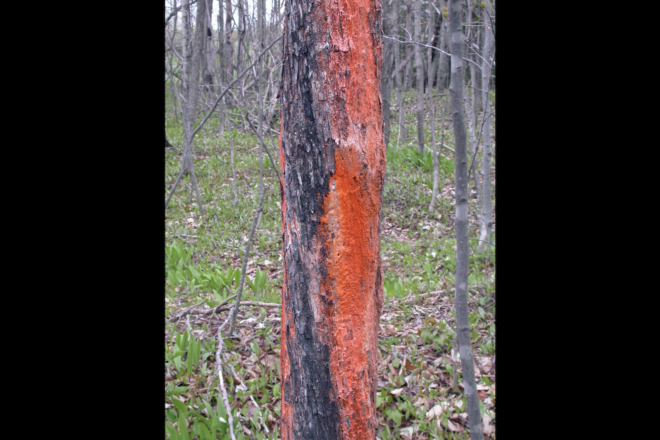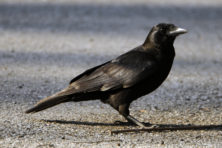Door to Nature: Ascomycetes in the Spring
- Share
- Tweet
- Pin
- Share

There are only a few mushrooms worth seeking in the spring woods. The black morel is one that sometimes appears before the yellow or brown morel, and both of these are edible in limited amounts.
One year, two friends from Suamico visited, and we picked 16 pounds of yellow morels in one day. We divided them up, and they took their eight pounds home, cleaned and cooked them. They ate too many and got sick. Mushrooms can be difficult to digest in too large of a quantity.
I cleaned our eight pounds, sliced them in half, top to bottom, and put them in our mushroom dehydrator. They were then stored in a big jar, readily available to be rehydrated and cooked as a flavorful addition to other foods.
Some of you may wonder, what are Ascomycetes? This is a large group of fungi and mushrooms that have spores borne in an ascus, and thus the name. The other major group of mushrooms are the Basidiomycetes, whose spores are borne on the tips of basidia. These terms are explained in any good mushroom field guide.
Spores are microscopically tiny, so the asci and basidia are equally tiny. I use an oil-immersion lens on my microscope, which magnifies them 980 times, so that I can examine the size, shape and ornamentation of spores.
True morels have pits and ridges on the upper half, and the entire structure is hollow. May is when a few false morels can be found. They are quite different, in that they have wrinkled, brain-like heads. When cut in half, top to bottom, they are irregularly hollow and solid.
The false morel, Gyromitra, is considered a poisonous species. It all depends on the environment, but these mushrooms may contain monomethylhydrazine, or MMH: a chemical that’s a component of rocket fuel and is lethal when consumed.
The toxin name is gyromitrin. Some people eat this mushroom with no problem, but it can be deadly and has killed many people in Europe. Its effects vary in different people, and it’s slow to show its toxin. Normally when people eat a mushroom that is mildly poisonous, they regurgitate it within two hours. Gyromitrin toxin often takes four to six hours to be noticed.
Other Ascomycetes (sac fungi) besides morels found in northeastern Wisconsin are cup, ear, jelly, earth tongue, saddle, carbon and Hypomyces, like the lobster mushroom.
One beautiful mushroom that may appear as early as April is the scarlet cup, or Sarcoscypha. It grows on dead wood that has lain on the ground for a while and may be difficult to see if it’s under fallen leaves. Just as its name implies, the inner cup is scarlet red. It can be up to four centimeters wide.
Another common cup fungus – Bisporella citrina, or lemon drops – grows on dead hardwood logs and appears later in the summer. Lemon drops are so tiny – only developing three-millimeter-wide fruiting bodies – that you can easily miss seeing them.
Some cup fungi appear all year long and come in many colors: red, orange, yellow, blue, green, brown, black and gray. You may find them attached to wood or growing on the soil. The spores are borne on the inner surface and are dispersed by wind and rain.
Dead man’s fingers can sometimes overwinter on decaying wood. These carbon-like growths are black, with a rough texture, and are pure white inside when fresh. Another close relative is called carbon antlers, also growing from well-rotted wood lying on the ground.
There are many types of deciduous trees in my woods. One is the ironwood, and in many springs, we see an unusual, slimy, orange fungus that oozes from the bark and may cover a large portion of the trunk. It, too, is an Ascomycete fungus whose scientific name is Fusarium merismoides, but it has no common name that I’m aware of. It has been seen in Canada and several European countries. It is considered a plant pathogen but doesn’t seem to kill the tree.
It has appeared as early as the last week of April, but more often it’s seen in the first week or two of May. The orange substance seems wet and runs down the trunk. After a week or so, it’s gone, and the tree remains alive and growing.
Get out to explore the spring woods, and if you do find some fungi, stop to observe their colors and growth patterns. And remember to eat only a modest number of cooked morels so you don’t get sick. It is vital to never eat raw mushrooms.




